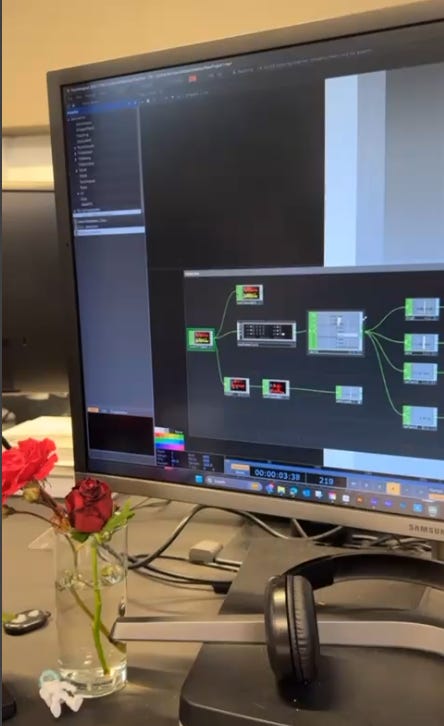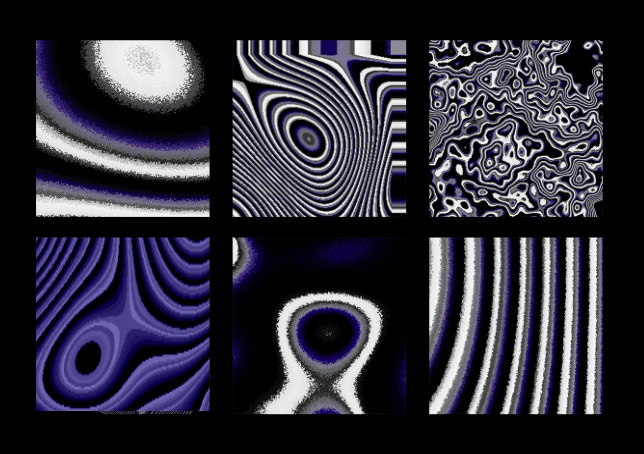Audio-reactive Visuals (AV's): My Journey with TouchDesigner
From learning curves to live performances.
I’ve been exploring TouchDesigner for just over a year now, and without a doubt, it's one of the hardest pieces of software I’ve ever learned. The interface becomes relatively straightforward over time, but it’s very different from other software with more user-friendly interfaces. My only frame of reference for this type of software is Spark AR and Octane Render due to their node-based systems. However, TouchDesigner is entirely node-based, making it feel like you're doing backend coding.
To learn, I initially tried watching YouTube videos, but there was no cohesive learning path. YouTube videos are great for learning specific techniques, but as a newbie navigating a challenging piece of software, I needed more direction. I decided to take a ‘TouchDesigner Beginners’ course by The Node Institute, which provided the structured learning I needed to familiarize myself with the interface. The course consisted of 12 live online lessons, each about 3 hours long. This posed several challenges: first, 3 hours is a long time to concentrate, especially at 6pm after a long day; second, being live meant I couldn’t pause to digest information; third, it was a lot of information to take in all at once. Despite these challenges, the course was great for accountability. I learned alongside others interested in the software, and the recorded lessons allowed me to revisit and practice at my own pace, which came in handy over the course of a year.

My full immersion into the software came when I started a job at the Ministry of Sound. I was hired as a graphic designer and worked as a creative technologist because of my technical abilities. My biggest task was to create audio-reactive visuals for live performances. Over about four months, I absorbed everything I could about TouchDesigner and gathered as much information as possible from the club’s technicians about feasibility and process. This was a significant project for me and a great opportunity to explore innovative possibilities in the clubbing space. Clubs like Printworks, Drumshed and Boiler Room were already integrating this technology as part of their club nights, I was going to be apart of doing this for Ministry of Sound.
My process was thorough. First, I had to get the team on board. This involved presenting to a team of graphic designers, a creative director, and technicians. I explained the basics of TouchDesigner, it's capabilities and where we are heading with the software. Everyone was on board, so it was time to create. To ensure alignment, I art directed visuals for each genre, from techno to house music, defining the aesthetic and key elements needed for each audio-visual experience. This involved listening to a lot of different music and digging into its history to ensure the visuals resonated with the core fan base.
Here is a slightly tweaked version of the deck I presented: [TouchDesigner: Modernise club experiences through audio reactive visuals.]
A major challenge was differentiation: how many visuals need to be created to ensure variety throughout a club night.
My favourite challenge was the audio-reactivity itself: what are the visuals responding to? Initially, I thought it would be as simple as inputting a song and pairing it with some visuals. I was wrong. Music is a combination of different sounds, and through TouchDesigner, I learned to extract data from each song using a music analyser.
This analyser breaks down the music into elements like high, low, medium frequencies, snare, beats, etc. I could make my visuals respond to any of these elements. Simply making visuals respond to the whole song resulted in a chaotic mess, but syncing visuals to specific data sets created interesting results.
Another aspect I had to decide on during AV creation was what elements should be controlled by music data points, what parts should be coded on a loop using Python script and what parts should remain static. Getting this right creates visual harmony and ensures the music and visuals are connected.
Using TouchDesigner for this project has been somewhat addictive due to its versatility and real-time capabilities. Any tweak I make shows results instantly, and even subtle changes can yield vastly different outcomes. This adaptability is helpful when different songs play, making the visuals feel alive.
Unfortunately, my time at the Ministry of Sound was cut short due to a change in the business structure and priorities. I never got to see my audio-visuals on their screens. I still believe in this project and its potential for musicians, so I’ll continue to explore TouchDesigner and audio-reactive visuals. My next major step is to see AVs on screens or projectors, hopefully with a team familiar with the process so I can focus solely on creation.
Follow my AV explorations on Instagram .





